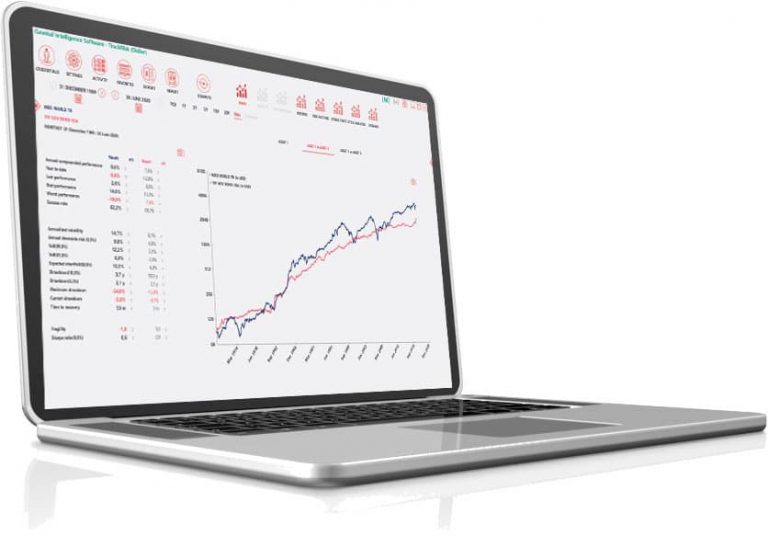TrackRisk defines a “Portfolio Scoring Function”, based on the selected constraints and optimizes allocations.
The optimization model is a genetic algorithm imitating the natural selection process of living organisms and converging towards the “best of breed” portfolio.
The “What If” function is designed to try and test manually potential reallocations. It provides information on all the underlying assets of the portfolio:
- Asset profile
- Return/ risk/ ratios
- Contribution to global risk
- Dependency to risk factors
- Stress test




